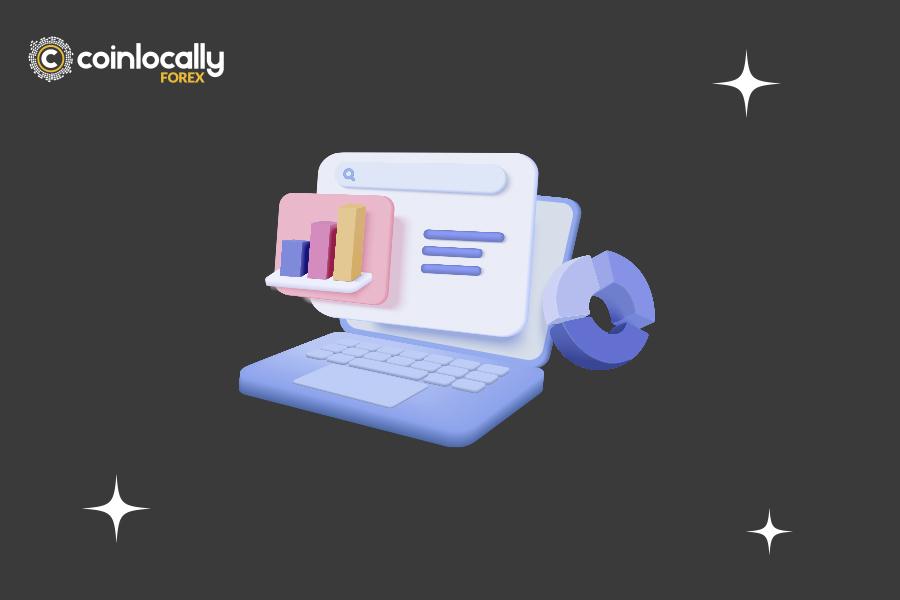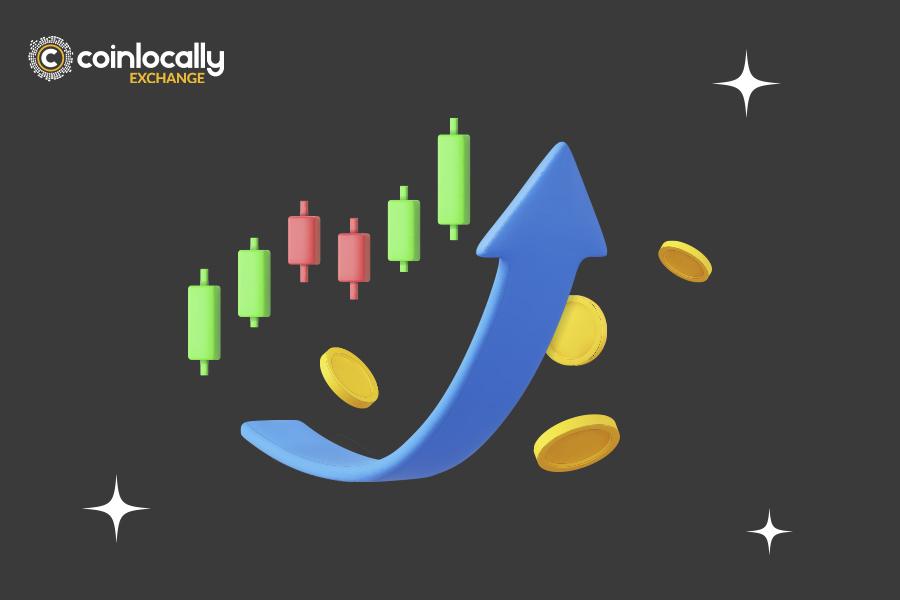Effective strategies for futures trading help you speculate on potential price changes for commodities like gold, cash, and stock shares. However, it’s not always easy and can be dangerous. For this reason, understanding the market’s dynamics and the most effective approaches is crucial. We’ll go over the top 5 trading strategies for 2023 in this blog post to assist you trade more profitably and securely.
Trading futures can be profitable, but it can also be risky because prices can fluctuate suddenly. This may be the result of significant news events or shifts in the supply and demand. To maximize your trading results, it is crucial to have a thorough understanding of the market and to employ effective strategies for futures trading.
We are going to outline the top futures trading tactics for 2023 in this blog, which every trader needs to be aware of.
Quick Getaway: Looking for a safe platform that offers the most secure Best Futures Trading App? Sign up with Coinlocally and enjoy the best Cryptocurrency trading strategies.
Table of Contents
• What are futures trading strategies?
• Futures Trading at Coinlocally
• Top 5 Effective Strategies for Futures Trading
• Tips to Consider for Effective Strategies for Futures Trading
What are futures trading strategies?
Effective strategies for futures trading help traders decide when to buy and sell contracts. These strategies are created by combining technical and fundamental analysis. Effective strategies for futures trading aid in lowering risk and raising the chance of success. By adhering to these methods, traders can steer clear of impulsive or emotional decisions and guarantee steady returns by using tried-and-true trading strategies.
You may also want to know about The Best Trade Forex Time
Futures Trading at Coinlocally
A recent exciting announcement from the well-known cryptocurrency exchange Coinlocally is expected to completely transform the trading experience for its users. With the introduction of futures trading, the platform has given traders more chances to profit from the volatile bitcoin market. Coinlocally now offers futures trading, allowing users to profit from market changes, properly control risk, and maybe increase their gains.
Users have access to an entirely new range of trading opportunities thanks to futures trading at Coinlocally. Now, traders are able to make predictions about the future values of a wide range of cryptocurrencies, including well-known ones like Ethereum and Bitcoin. Futures contracts allow traders to take advantage of both increasing and falling prices by allowing them to go long or short, regardless of the direction of the market trend.
Top 5 Effective Strategies for Futures Trading
There are many different ways to trade futures contracts. Here are some of the Effective strategies for futures trading.
1. Spread Trading
Futures spread trading is one of the Effective strategies for futures trading in which a trader simultaneously buys and sells related futures contracts or options contracts in order to profit from the price difference between them. The goal of spread trading is to capitalize on the relative value or price relationship between two or more instruments rather than relying on the direction of the overall market.
Here are some common types of spread trading strategies:
• Calendar Spreads:
A calendar spread involves buying and selling futures contracts or options with the same underlying asset but different expiration dates. The trader profits from the difference in price movements between the near-term and longer-term contracts. For example, they might buy a near-term contract and sell a longer-term contract if they believe the near-term contract will experience faster price movements.
• Inter-Commodity Spreads:
Inter-commodity spreads involve trading futures contracts or options on different but related commodities. For example, a trader might buy crude oil futures contracts and sell natural gas futures contracts, anticipating a price divergence or convergence between the two commodities. This strategy, as one of the effective strategies for futures trading, takes advantage of the correlation or price relationship between different markets.
• Inter-Market Spreads:
Inter-market spreads involve trading related futures contracts or options within the same market but different delivery months. For example, traders might buy a futures contract for delivery in one month and sell a contract for delivery in another month. This strategy among effective strategies for futures trading, aims to profit from the price difference between the two months, which may arise due to factors such as supply and demand dynamics, seasonality, or market expectations.
• Exchange-Traded Spreads:
Some exchanges offer specific spread trading instruments that allow traders to simultaneously buy and sell different contracts within the same market. These exchange-traded spreads typically have predefined price relationships and can offer more liquidity and transparency compared to executing individual legs of a spread manually.
Spread trading offers several potential advantages, including reduced exposure to overall market movements, potentially lower margin requirements, and the ability to profit from relative value opportunities. However, it is important to closely monitor the positions and manage risk, as spread trades can still be subject to market risks and unexpected events.
Traders implementing spread trading strategies, as one of the effective strategies for futures trading, typically analyze historical price relationships, fundamental factors, and technical indicators to identify potential spread opportunities. They may also use tools such as ratio analysis, correlation analysis, or inter-market analysis to assess the strength of the spread and determine entry and exit points.
As spread trading involves more complex effective strategies for futures trading, it’s advisable for traders to have a solid understanding of futures markets, risk management techniques, and the intricacies of the specific spreads they are trading.
2. Breakout Trading
Breakout trading is a strategy among the effective strategies for futures trading that involves entering trades when the price of an asset breaks out of a defined range or pattern. The strategy is based on the idea that when prices break through significant support or resistance levels, it indicates a strong momentum and potential for further price movement in the same direction.
Here are the key elements and steps involved in breakout trading:
• Identify the Range or Pattern:
The first step is to identify a well-defined range or pattern in the price chart. This could be a horizontal range, a triangle pattern, a rectangle pattern, or any other formation where the price has been consolidating within specific boundaries.
• Determine Support and Resistance Levels:
Within the identified range or pattern, determine the key support and resistance levels among the effective strategies for futures trading. Support is the price level where buying pressure is expected to be strong enough to prevent the price from falling further. Resistance is the price level where selling pressure is expected to be strong enough to prevent the price from rising further.
• Set Entry and Exit Points:
Once the range or pattern is identified and the support and resistance levels are determined, set the entry and exit points for the trade. Traders typically enter the trade when the price breaks above the resistance level (for a long position) or below the support level (for a short position). This breakout confirms a potential change in market sentiment and triggers the trade entry. Stop-loss orders are placed below the breakout level to limit potential losses, and profit targets can be set based on the projected price move or the next significant resistance or support level.
• Confirm with Volume and Momentum Indicators:
To increase the probability of a successful breakout trade, traders often look for confirmation signals from volume and momentum indicators as effective strategies for futures trading. Higher trading volume during the breakout can indicate increased market participation and validate the breakout. Similarly, positive momentum indicators like the Moving Average Convergence Divergence (MACD) or Relative Strength Index (RSI) can provide additional confirmation of the price move.
• Manage Risk and Monitor the Trade:
Proper risk management is crucial in breakout trading when considering effective strategies for futures trading. Set an appropriate position size based on your risk tolerance and use stop-loss orders to limit potential losses if the breakout fails or reverses. Continuously monitor the trade, adjust stop-loss levels if needed, and consider trailing stop orders to lock in profits as the price continues to move in your favor.
It’s important to note that not all breakouts lead to sustained price movements, and false breakouts can occur. Therefore, it’s essential to combine breakout trading with proper risk management, technical analysis, and confirmation signals to increase the likelihood of success. Traders often use additional tools such as trendlines, chart patterns, or other technical indicators to enhance their breakout trading strategies.
3. Going Long
Another effective strategies for futures trading is going long in futures trading that refers to taking a bullish position on a particular futures contract, with the expectation that its price will rise. When you go long, you buy the contract at the current price and aim to sell it at a higher price in the future to realize a profit.
Here are the key steps and considerations when going long in futures trading:
• Choose the Futures Contract:
Identify the specific futures contract you want to trade based on your market analysis and trading strategy. Futures contracts are available for various asset classes such as commodities, currencies, stock indices, and interest rates.
• Conduct Market Analysis:
To discover effective strategies for futures trading, perform thorough market analysis to identify potential opportunities. This may involve analyzing fundamental factors, technical indicators, chart patterns, or other relevant information to assess the market’s bullish potential. Look for factors that may indicate upward price movements, such as positive news, strong demand, or favorable market conditions.
• Determine Entry Point:
Identify a suitable entry point for your long position. This can be based on technical analysis, such as a breakout above a key resistance level, a pullback to a support level, or a bullish chart pattern. Alternatively, you may consider a fundamental analysis approach, such as buying in anticipation of positive events or market trends.
• Place the Trade:
Once you’ve determined your entry point, place the trade with your broker. Specify the contract, quantity, and other relevant details. Ensure you have sufficient account balance or margin to cover the trade. Consider using stop-loss orders to manage risk and limit potential losses if the market moves against your position.
• Monitor and Manage the Position:
After entering the long trade, closely monitor the market and manage your position. Continuously assess market conditions, news, and technical indicators to adjust your strategy if necessary. Consider using trailing stops to protect profits and potentially lock in gains as the price moves in your favor.
• Determine Exit Point:
Determine your exit strategy by identifying a target price or a set of conditions that would prompt you to close the position. This could be based on technical indicators, profit targets, or a predefined time horizon. Regularly review your trade and adjust your exit strategy as the market evolves.
• Close the Position:
When your target price or exit conditions are met, close the position as one of the effective strategies for futures trading by selling the futures contract. This will realize your profit or loss based on the difference between the entry and exit prices. Ensure you understand the mechanics of closing a futures position with your broker, as it may involve specific order types or procedures.
Remember that futures trading involves risks, including the potential for substantial losses. It’s important to have a solid understanding of the market, use proper risk management techniques, and consider consulting with a financial advisor or professional before engaging in futures trading.
• Pullback Trading
Consider pullback trading as another strategy, among effective strategies for futures trading, in which traders aim to capitalize on temporary price retracements within an overall trend. It involves identifying a market that is in an established uptrend or downtrend and entering trades when there is a temporary pullback or correction against the prevailing trend. In the context of futures trading, pullback trading can be applied to various futures contracts.
Here are the key steps and considerations concerning effective strategies for futures trading involved in pullback trading:
• Identify the Trend:
Start by identifying the overall trend in the market. This can be done using various technical analysis tools such as trendlines, moving averages, or trend indicators. Determine whether the market is in an uptrend (higher highs and higher lows) or a downtrend (lower highs and lower lows).
• Define Pullback Criteria:
Establish criteria for what constitutes a pullback or retracement within the trend. This may involve looking for price declines or corrections of a certain magnitude or percentage against the prevailing trend. The specific criteria will depend on the market being traded and the trader’s preferences and risk tolerance.
• Determine Support or Resistance Levels:
When employing effective strategies for futures trading, Identify support and resistance levels within the trend that may act as potential areas where the price could reverse or bounce back. These levels can be identified using technical analysis tools such as horizontal support/resistance levels, Fibonacci retracements, or pivot points.
• Confirm Reversal Signals:
Look for confirmation signals when empolying effective strategies for futures trading, that indicate the end of the pullback and a potential resumption of the trend. These signals may include bullish or bearish candlestick patterns, trendline breaks, or the emergence of bullish or bearish indicators like the Moving Average Convergence Divergence (MACD) or the Relative Strength Index (RSI).
• Enter the Trade:
Once the pullback is confirmed and the reversal signals align with the overall trend, consider entering a trade in the direction of the trend. For a bullish pullback, this would involve buying long positions, while for a bearish pullback, it would involve selling short positions. Determine your entry point, stop-loss level, and profit target based on your risk management strategy.
• Manage the Trade:
Continuously monitor the trade as it progresses as one of the effective strategies for futures trading. Adjust the stop-loss level to limit potential losses and protect profits as the price moves in your favor. Consider using trailing stops to lock in profits if the price continues to move in the desired direction. Additionally, manage position sizing and risk by adhering to proper risk management techniques.
• Exit the Trade:
Determine your exit strategy based on predefined criteria, such as reaching a profit target or if the price shows signs of reversing against the trade. Consider using technical analysis tools or trailing stops to help guide your decision-making process.
It’s important to note that pullback trading, like any effective strategies for futures trading, carries risks, including the potential for losses. It’s crucial to conduct thorough analysis, practice proper risk management, and adapt the strategy to suit your trading style and risk tolerance. Additionally, keep in mind that no trading strategy guarantees success, and losses can occur.
4. Order Flow Trading
Order flow trading is one of the effective strategies for futures trading that focuses on analyzing and interpreting the actual orders being placed in the market, rather than relying solely on price and chart patterns. It involves studying the flow of buy and sell orders, the volume traded at different price levels, and the behavior of market participants to gain insights into market dynamics and make trading decisions.
In the context of futures trading, order flow analysis in combination with other tools can be used to identify potential trade setups and improve trading decisions. Here are some key aspects of order flow trading in futures:
• Depth of Market (DOM):
The DOM provides a real-time display of the current bid and ask prices and the corresponding quantities at different price levels. By observing changes in the DOM, traders can gauge the supply and demand dynamics in the market and identify areas of significant buying or selling interest.
• Market Order Flow:
Market orders are orders to buy or sell at the best available price. Monitoring the flow of market orders can provide insights into the urgency or aggressiveness of market participants. For example, a surge in market sell orders may suggest increased selling pressure and potential downward price movement.
• Limit Order Flow:
Limit orders are orders to buy or sell at a specific price or better. Analyzing the flow of limit orders can reveal areas of support or resistance where traders are willing to transact. Large concentrations of limit orders at specific price levels can act as potential turning points or areas of price consolidation.
• Volume Analysis:
Among effective strategies for futures trading, volume is an essential component of order flow analysis. Monitoring volume traded at different price levels can help identify areas of high liquidity, where significant buying or selling activity is taking place. Unusual volume spikes or divergences from price movements can provide valuable insights into market sentiment and potential reversals or breakouts.
• Time and Sales (T&S) Data:
Time and Sales data show the individual trades executed in the market, including the price, time, and volume of each trade. Analyzing T&S data can reveal the pace of trading, the size of trades, and potential patterns or anomalies that can be used to assess market strength or weakness.
• Cumulative Delta:
Cumulative Delta is a tool that tracks the difference between the buying and selling volume at each price level. It helps assess the net buying or selling pressure in the market. Positive cumulative delta indicates more buying pressure, while negative cumulative delta suggests more selling pressure.
• Order Flow Patterns:
Traders often look for specific order flow patterns to identify potential trading opportunities and effective strategies for futures trading. These patterns may include absorption of orders at key levels, iceberg orders (large orders hidden from the DOM), order imbalances, or rapid price movements on high volume.
It’s important to note that order flow analysis is a complex and nuanced approach to trading, requiring experience, skill, and access to appropriate tools and data. Traders often use specialized software platforms or indicators to assist with order flow analysis. Additionally, combining order flow analysis with other technical and fundamental analysis techniques can enhance decision-making and increase the probability of successful trades.
Tips to Consider for Effective Strategies for Futures Trading:
- Educate Yourself: Before diving into futures trading, make sure you have a solid understanding of the futures markets, including the underlying assets, contract specifications, and market dynamics. Take the time to learn about technical analysis, fundamental analysis, and risk management techniques.
- Develop a Trading Plan: A well-defined trading plan is crucial for futures trading success. It should include your trading goals, risk tolerance, entry and exit criteria, position sizing, and risk management rules. Stick to your plan and avoid making impulsive decisions based on emotions.
- Follow the Trend: Trend-following strategies are popular in futures trading. Identify the major trends in the market using technical indicators or chart patterns, and then trade in the direction of the trend. This strategy aims to capitalize on the momentum and can be effective in trending markets.
- Use Risk Management Techniques: Proper risk management is essential to protect your capital. Set stop-loss orders to limit potential losses and use position-sizing techniques to ensure that you don’t risk too much on a single trade. Avoid over-leveraging, as excessive leverage can lead to significant losses.
- Diversify Your Portfolio: Don’t put all your eggs in one basket. Diversify your futures trading portfolio by trading multiple contracts or different asset classes. This can help spread the risk and reduce the impact of a single trade or market event.
- Stay Informed: Stay updated with relevant news, economic data, and market developments that can impact the futures markets. Be aware of scheduled events and announcements that may cause volatility. This information can help you make informed trading decisions.
- Practice with Simulated Trading: Before risking real money, consider practicing your strategies with simulated trading platforms. This allows you to gain experience and test your strategies without incurring actual losses.
- Monitor and Review: Continuously monitor your trades, review your performance, and learn from your successes and failures. Keep a trading journal to record your trades, including the rationale behind each decision. Analyze your trades to identify patterns and areas for improvement.
Conclusion:
To discover effective strategies for futures trading, it is important to employ strategies that enable you to speculate on potential price movements for commodities such as gold, cash, and stock shares. However, this endeavor is not without its challenges and risks. Therefore, it is essential to comprehend the dynamics of the market and adopt the most effective strategies for futures trading.
Trading futures can yield profits, but it also carries inherent risks due to sudden price fluctuations. These fluctuations can arise from significant news events or shifts in supply and demand. To optimize your trading outcomes, it is crucial to possess a comprehensive understanding of the market and employ suitable trading techniques.






